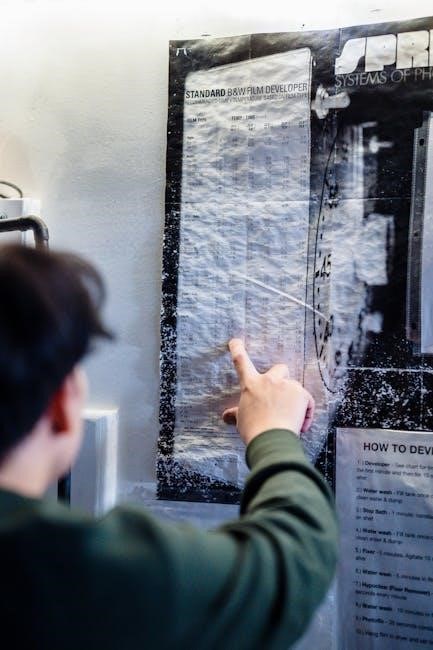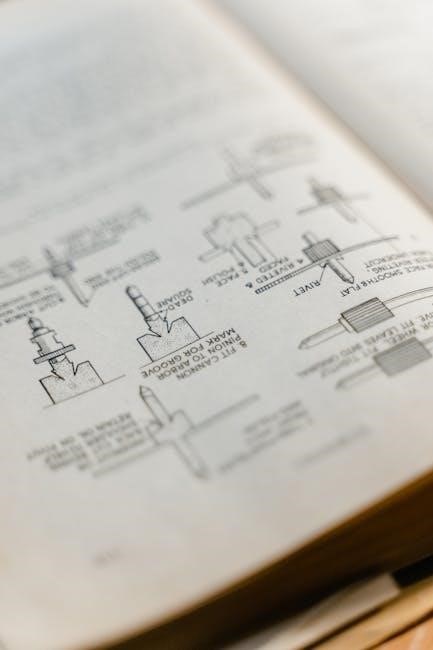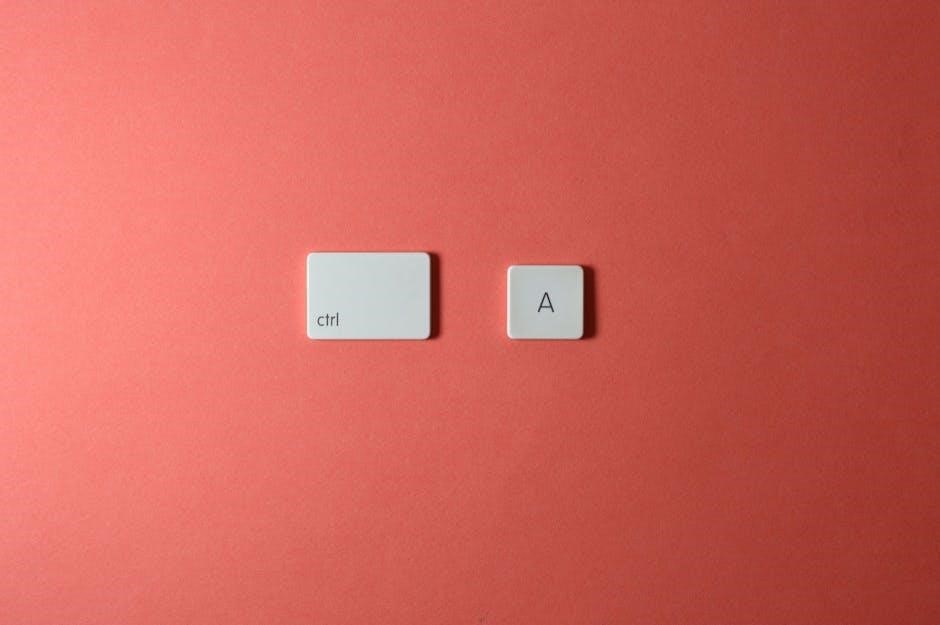Welcome to your comprehensive guide for using Stealth Cam products! This manual provides essential information for setting up‚ operating‚ and maintaining your Stealth Cam. Refer to specific model manuals online‚ ensuring optimal performance through firmware updates and proper care detailed within.
Stealth Cams have revolutionized wildlife monitoring and security‚ offering a discreet way to capture images and videos in various environments. For over 20 years‚ Stealth Cam has been an industry leader‚ providing cutting-edge technology in trail cameras. These cameras are designed for outdoor use‚ enabling users to observe wildlife‚ monitor property‚ or track activity without being noticed. Whether you’re a wildlife enthusiast‚ a hunter‚ or a property owner‚ Stealth Cams provide valuable insights and peace of mind.
This instruction manual will guide you through the essential aspects of using your Stealth Cam‚ ensuring you maximize its potential. From initial setup and understanding the menu settings to troubleshooting common issues‚ this guide will cover it all. Stealth Cams are equipped with features like high-resolution imaging‚ night vision‚ and motion detection‚ making them versatile tools for any situation. By following this manual‚ you’ll be able to capture high-quality images and videos‚ monitor your surroundings effectively‚ and maintain your camera for long-lasting performance. Get ready to explore the world of Stealth Cams and discover how they can enhance your outdoor experiences and security measures.
Understanding Your Stealth Cam Model
To fully utilize your Stealth Cam‚ it’s crucial to understand the specific features and capabilities of your particular model. Stealth Cam offers a range of models‚ each designed with unique specifications to meet different needs. Identifying your model is the first step in accessing the correct resources and instructions.
Refer to the product packaging‚ the camera itself‚ or your purchase receipt to find the model number. Once you have identified your model‚ visit the Stealth Cam website to access the specific instruction manual and firmware updates relevant to your device. Each manual provides detailed information on the camera’s components‚ such as the lens‚ sensors‚ and control buttons. Understanding these components will help you optimize your camera settings and capture the best possible images and videos. Furthermore‚ the manual will outline the camera’s technical specifications‚ including image resolution‚ video quality‚ detection range‚ and battery life. By familiarizing yourself with these details‚ you can tailor your camera’s settings to suit your specific monitoring needs. Whether you have a basic model or a more advanced version with cellular capabilities‚ knowing your camera’s capabilities is essential for effective use;
Initial Setup: Batteries and SD Card
Before deploying your Stealth Cam‚ proper initial setup is crucial for optimal performance. This involves correctly inserting batteries and an SD card. Begin by selecting high-quality batteries‚ as recommended in your camera’s manual. Ensure they are fresh to maximize battery life and prevent premature power depletion. Open the battery compartment‚ usually located on the camera’s side or bottom‚ and insert the batteries according to the polarity markings (+ and -) indicated inside the compartment. Incorrect battery insertion can damage the camera.
Next‚ choose a compatible SD card. Check your manual for the maximum supported storage capacity and recommended SD card type. Insert the SD card into the designated slot‚ typically found near the battery compartment. Ensure the card is oriented correctly before inserting it fully. A gentle click usually indicates secure insertion. Formatting the SD card within the camera is recommended for optimal compatibility. Refer to your manual for instructions on how to format the card through the camera’s menu. With batteries and the SD card properly installed‚ your Stealth Cam is now ready for further configuration and deployment.
Mounting and Positioning Your Stealth Cam
Proper mounting and positioning are essential for capturing the desired images and videos with your Stealth Cam. Begin by selecting a sturdy mounting location that offers a clear view of the area you wish to monitor. Consider factors such as the target animal’s likely path‚ sunlight direction‚ and potential obstructions like branches or tall grass. The camera should be mounted at an appropriate height‚ typically around 3-5 feet off the ground for deer-sized animals‚ but adjust as needed based on the target species.

Utilize the provided strap or mounting bracket to securely attach the camera to a tree‚ post‚ or other stable object. Ensure the camera is firmly fastened to prevent movement from wind or other disturbances. Adjust the camera’s angle to achieve the desired field of view. Testing the camera’s coverage before leaving the site is recommended. Walk through the intended detection zone to ensure the camera triggers properly. Fine-tune the position as needed to optimize capture results. Consider using a Python lock cable for added security against theft. Remember to check the mounting periodically for stability and make adjustments as necessary.
Navigating the Menu and Settings
Understanding the menu and settings of your Stealth Cam is crucial for customizing its performance to your specific needs. Begin by powering on the camera and accessing the menu using the designated buttons‚ typically labeled “Menu” or “OK.” The menu system usually presents a series of options displayed on the built-in screen. Use the navigation buttons (often arrow keys) to move through the menu items and select the desired setting.
Common menu options include photo resolution‚ video resolution‚ burst mode settings‚ trigger delay‚ PIR sensitivity‚ date and time settings‚ and operating mode. Each setting allows you to fine-tune the camera’s behavior. For example‚ you can adjust the photo resolution to balance image quality and storage space. The trigger delay setting determines how long the camera waits before taking another picture after an initial trigger. PIR sensitivity adjusts the motion detection range. Refer to your camera’s manual for detailed descriptions of each setting and their effects. After making changes‚ be sure to save them before exiting the menu to ensure they are applied.
Setting the Date and Time
Accurately setting the date and time on your Stealth Cam is essential for properly cataloging your captured images and videos. Without the correct date and time‚ it becomes difficult to organize and analyze your recordings effectively. To set the date and time‚ first‚ power on your Stealth Cam and access the menu settings. Navigate through the menu options using the arrow keys until you find the “Date/Time” setting. Select this option to enter the date and time configuration screen.
Here‚ you’ll typically find separate fields for setting the month‚ day‚ year‚ hour‚ and minute. Use the arrow keys to highlight each field and adjust the values accordingly. Some models may also offer a 24-hour time format option. Ensure you select the correct format based on your preference. Once you have entered the correct date and time‚ save the settings. Most cameras have a “Save” or “OK” option to confirm the changes. Double-check the display to verify that the date and time are accurately reflected before exiting the menu. This ensures all future recordings will be correctly timestamped.
Configuring Capture Settings (Photo‚ Video‚ Burst)
Your Stealth Cam offers versatile capture settings to tailor its performance to your specific needs. Understanding and configuring these settings is crucial for obtaining the desired results. To begin‚ access the camera’s menu and navigate to the “Capture Settings” section. Here‚ you’ll find options for photo‚ video‚ and burst modes. For photo mode‚ you can typically adjust the resolution‚ determining the image’s clarity and file size. Higher resolutions capture more detail but require more storage space.
Video mode allows you to set the video resolution (e.g.‚ 720p‚ 1080p) and the recording duration for each clip. Burst mode enables the camera to capture multiple photos in quick succession when triggered. This is useful for capturing fast-moving subjects. You can usually configure the number of photos taken per burst; Experiment with different settings to find the optimal balance between image/video quality‚ storage capacity‚ and battery life. Remember to save your changes after configuration.
Understanding PIR Sensitivity and Trigger Delay

Two critical settings impacting your Stealth Cam’s performance are PIR (Passive Infrared) sensitivity and trigger delay. PIR sensitivity determines how easily the camera is triggered by motion. Higher sensitivity means the camera will detect motion from further away and smaller movements‚ potentially leading to more false triggers (e.g.‚ from wind or small animals). Lower sensitivity requires more significant movement closer to the camera for activation‚ reducing false triggers but potentially missing some activity;

Trigger delay is the time the camera waits after taking a photo or video before it can be triggered again. A shorter delay increases the chance of capturing multiple images of the same event‚ but it can quickly drain the battery. A longer delay conserves battery life but may cause you to miss subsequent action. Adjust these settings based on the environment and target subject.
Reviewing Images and Videos
After your Stealth Cam has diligently captured footage‚ it’s time to review the results. The most common method involves removing the SD card and inserting it into a computer or mobile device using an adapter. Ensure your device is compatible with the SD card format. On your computer‚ the SD card will appear as a removable drive‚ allowing you to browse the folders containing your images and videos.
Alternatively‚ some Stealth Cam models feature a built-in viewing screen. Navigate the menu to access the playback mode‚ where you can scroll through captured media. Other cameras may offer wireless connectivity‚ enabling you to review footage via a dedicated mobile app. Regularly reviewing your captures helps ensure your camera is optimally positioned and configured for the desired results. Don’t forget to delete unwanted files to free up space on your SD card!
Troubleshooting Common Issues
Even with careful setup‚ you might encounter issues with your Stealth Cam. One frequent problem is the camera not triggering. Ensure batteries are fresh and correctly installed. Verify that the PIR sensitivity is appropriately set for the environment. Obstructions like branches can cause false triggers‚ so clear the camera’s field of view. Another common issue is poor image quality. Check the lens for dirt or moisture and clean it gently. Ensure the SD card has sufficient space and is compatible with the camera.

If the camera fails to power on‚ try a different set of batteries. For connectivity problems with cellular models‚ confirm your data plan is active. Refer to the LED indicator codes in your manual; they often pinpoint the source of the problem. If issues persist‚ consult the Stealth Cam support website or contact their customer service for assistance.
Firmware Updates and Software
Keeping your Stealth Cam’s firmware up-to-date is crucial for optimal performance and accessing new features. Regularly check the Stealth Cam website for the latest firmware versions specific to your model. The update process usually involves downloading the firmware file and transferring it to your camera’s SD card‚ followed by initiating the update through the camera’s menu.
Stealth Cam often provides software or mobile apps to manage your camera settings and view captured media. These apps can simplify tasks such as configuring capture settings‚ reviewing images‚ and monitoring camera status. Ensure you download the correct software version for your operating system or mobile device. Consult the product manual for detailed instructions on installing and using the software. Proper software maintenance ensures a seamless experience with your Stealth Cam.
Maintenance and Care
Proper maintenance and care are essential for extending the life and performance of your Stealth Cam. Regularly inspect the camera housing for any signs of damage‚ such as cracks or loose seals. Clean the lens with a soft‚ dry cloth to remove dirt or debris that may affect image quality. Store your camera in a dry‚ cool‚ and dust-free environment when not in use.
Always use high-quality batteries and replace them as needed to prevent corrosion and ensure reliable operation. Periodically check the SD card for errors and format it if necessary. Avoid exposing the camera to extreme temperatures or humidity. When storing for extended periods‚ remove the batteries and SD card. Following these maintenance practices will help keep your Stealth Cam in optimal condition for years to come; Refer to your manual for specific model instructions!
Warranty Information and Support
Your Stealth Cam is covered by a limited warranty against defects in materials and workmanship‚ typically for 365 days from the original purchase date. This warranty covers parts and labor necessary to repair or replace the camera at Stealth Cam’s discretion. The warranty is void if the camera has been damaged by misuse‚ neglect‚ unauthorized modifications‚ or natural disasters.
To obtain warranty service‚ contact Stealth Cam customer support via their website or toll-free number. You may need to provide proof of purchase and a detailed description of the issue. Stealth Cam provides product updates‚ firmware downloads‚ and instruction manuals on their website to aid in the upkeep of your camera and is the most important source for troubleshooting. Their support team can assist with troubleshooting‚ technical questions‚ and warranty claims. Don’t hesitate to contact them for assistance!
